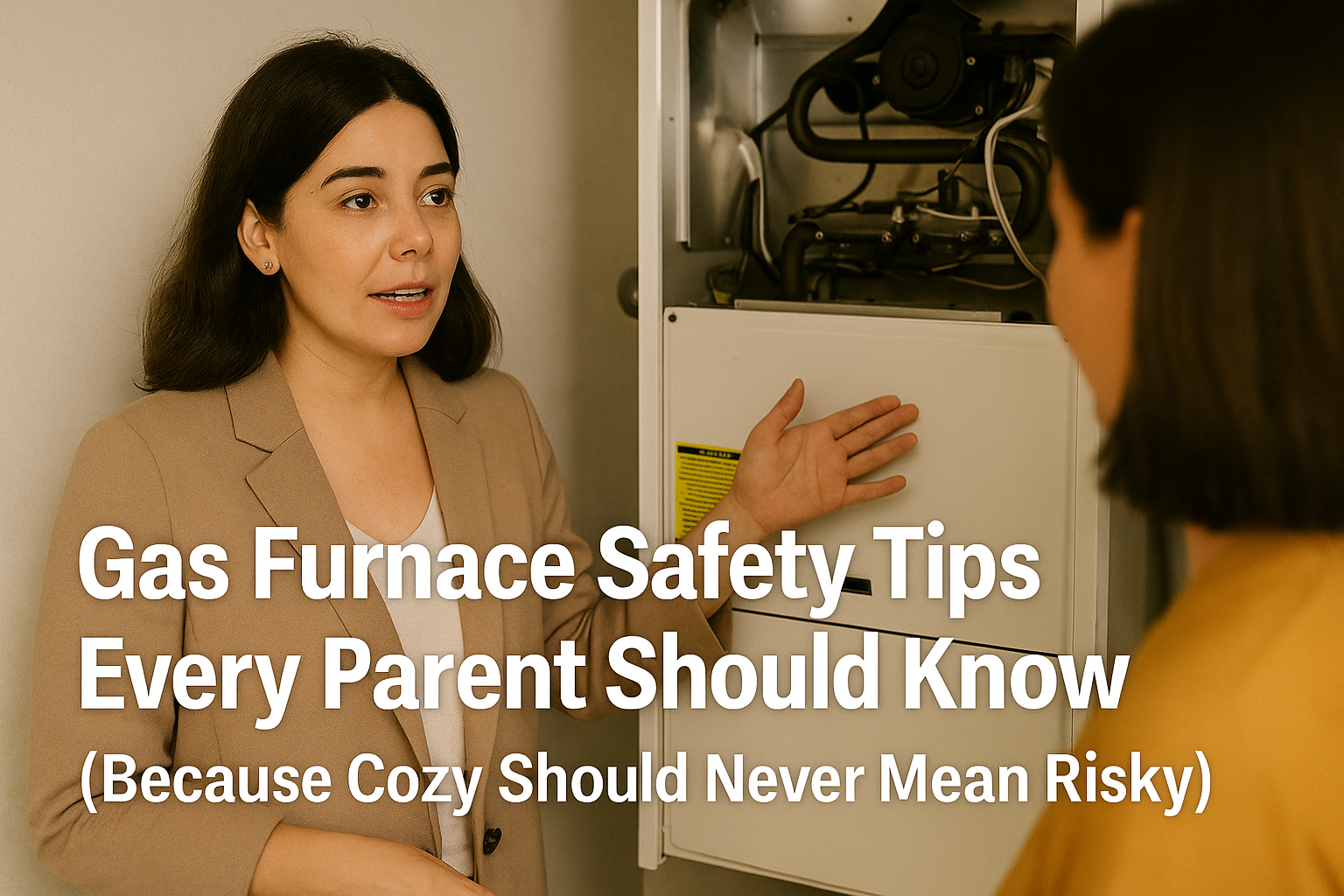🛑 First, Let’s Be Clear — Gas Furnaces Are Safe When You Use Them Right
Gas furnaces — especially modern ones like the Goodman GR9S920603BN — are built with layers of safety features. But just like with your car seat or outlet covers, it’s how you use the system that matters.
Let’s go through the key ways to keep your home safe, warm, and stress-free — no HVAC certification needed.
🧯 1. Install (and Maintain!) Carbon Monoxide Detectors
If your furnace burns natural gas, it produces a small amount of carbon monoxide (CO). Normally, it vents safely outdoors. But if there’s a blockage, a cracked heat exchanger, or a leak? You need a backup plan.
Savvy Safety Tip:
-
Install CO detectors on every level of your home, especially near bedrooms.
-
Replace batteries twice a year (daylight savings is a good reminder).
-
Swap out detectors every 5–7 years, depending on the model.
🧠 Bonus resource: Consumer Product Safety Commission CO Safety Guide
🔍 2. Schedule an Annual Furnace Check-Up (Yes, Every Year!)
I know, I know — one more thing on the list. But hear me out. A yearly furnace inspection:
-
Catches small issues before they become big expensive ones
-
Keeps your system running efficiently and safely
-
Protects your warranty (many require proof of maintenance!)
A pro will check gas lines, heat exchangers, flue pipes, and ignition systems — all the things you don’t want to guess at.
Pro tip: Schedule in early fall, before the cold hits and HVAC techs get booked solid.
🧼 3. Keep the Area Around Your Furnace Clear
Your furnace needs to breathe. Storing boxes, laundry, or cleaning supplies too close can:
-
Block airflow
-
Increase fire risk
-
Lead to overheating
Savvy Rule of Thumb:
Keep a 3-foot safety zone around your unit. Bonus points for labeling the area so everyone in the house (yes, even your teen) knows not to pile stuff there.
🧒 4. Teach Your Kids (Without Freaking Them Out)
We’re not talking a full HVAC lesson, but a little awareness goes a long way.
-
Show them what the furnace looks like and where it lives.
-
Teach them to never touch or play near the furnace.
-
Explain what a CO alarm sounds like and what to do if it goes off.
Make it a calm, confident conversation — not a scary one.
🔧 5. Check Your Filter (And Change It More Than You Think)
A dirty filter = more strain on your furnace = higher chance of overheating or failure. Plus, yuck — your kids are breathing that air.
General guideline:
-
Check every 30 days
-
Change every 60–90 days (or more often if you have pets or allergies)
Furnace filters are cheap. ER visits and emergency repairs are not. 😉
📎 Related tip from the EPA’s Indoor Air Quality page: clean filters improve both air quality and safety.
🔌 6. Know How to Shut It Down (Just in Case)
If there’s ever a gas smell, strange noise, or a CO alarm goes off — you need to know how to cut power and gas to the furnace quickly.
-
The electrical shut-off switch looks like a light switch near the unit.
-
The gas shut-off valve is usually a small handle near the pipe connection.
Label them. Teach every adult in your house how to use them. Keep emergency numbers handy.
📋 7. Understand the Safety Features Built Into Your Furnace
Modern units like the Goodman GR9S920603BN come with:
-
🔥 Flame sensors that shut the system off if ignition fails
-
🧠 Control boards that monitor for irregular operations
-
💨 Draft pressure sensors to prevent dangerous backflow
These features work behind the scenes — but only if the system is clean and maintained. Don’t skip that annual tune-up!
🛠️ 8. Don’t DIY Gas Line Work — Ever
Let me be blunt: unless you're a licensed HVAC pro, don’t touch the gas lines, flue pipes, or burner assembly.
I’m all about DIY when it makes sense — filters, thermostats, and smart upgrades are totally doable. But when it comes to gas or exhaust systems? That’s a hard no from me.
🧠 Final Thoughts from Savvy
Being a parent means balancing comfort, safety, and sanity — and your furnace is right at the center of that trifecta during winter. A model like the Goodman GR9S920603BN delivers dependable warmth with modern safety built in. You just have to use it smart.
Because being savvy means:
-
Asking the right questions
-
Staying one step ahead of risk
-
And making sure comfort never comes at the cost of safety
Stay cozy. Stay smart. Stay safe. 💙
In the next topic we will read about: Furnace Filters Demystified: Which One Should You Really Buy?







